We put the Oppo Find X6 Pro through our rigorous DXOMARK Camera test suite to measure its performance in photo, video, and zoom quality from an end-user perspective. This article breaks down how the device fared in a variety of tests and several common use cases and is intended to highlight the most important results of our testing with an extract of the captured data.
Overview
Key camera specifications:
- Primary: 50MP 1″sensor, 23mm equivalent f/1.8-aperture lens, OIS
- Ultra-wide: 50MP 1/1.56″sensor, 15mm equivalent f/2.2-aperture lens
- Tele: 50MP 1/1.56″ sensor, 65mm equivalent f/2.6-aperture lens
- Video: up to 4K resolution at 60fps (4K/30fps tested)
Scoring
Sub-scores and attributes included in the calculations of the global score.
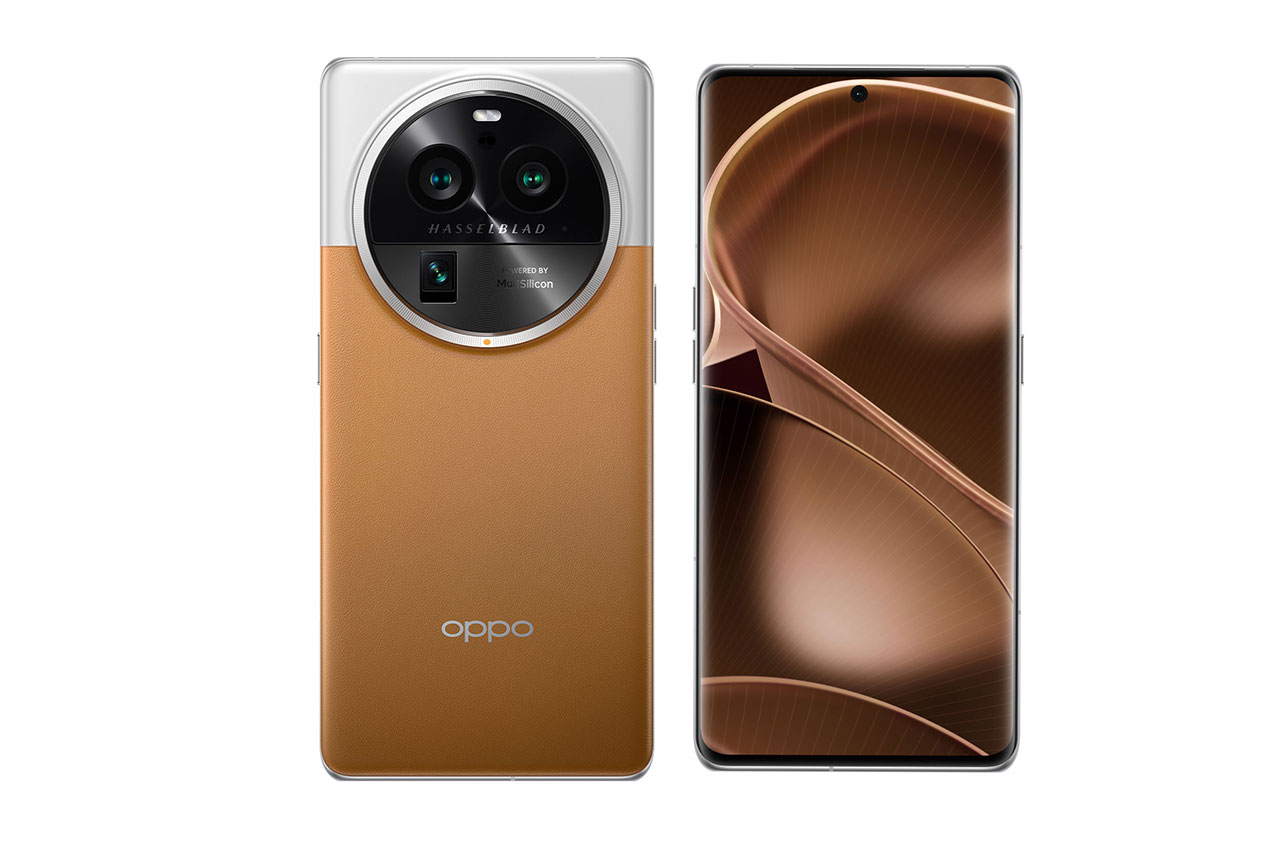
Oppo Find X6 Pro


Use cases & Conditions
Use case scores indicate the product performance in specific situations. They are not included in the overall score calculations.
Outdoor
Photos & videos shot in bright light conditions (≥1000 lux)
Indoor
Photos & videos shot in good lighting conditions (≥100lux)
Lowlight
Photos & videos shot in low lighting conditions (<100 lux)
Friends & Family
Portrait and group photo & videos
Cons
- Lack of contrast in backlit portrait photos
- Some exposure instabilities in photo and video
- Shallow depth of field means group shots need to be taken from afar to have everybody in focus
- Unnatural skin tones in some conditions
- Dynamic range differences between capture and preview image
The Oppo Find X6 Pro is the new No. 1 in the DXOMARK Camera ranking for smartphones, thanks to an outstanding overall performance and massive improvements over its predecessor, making it an excellent option for photographers who want to capture landscapes and portraits with lots of natural detail in all light conditions.
The latest Oppo flagship uses large image sensors across all camera modules, which contributes to excellent texture and noise results in photo, zoom, bokeh, and video. In our tests, fine detail was preserved impressively well, and noise levels were kept very low, making the Find X6 Pro the best smartphone to date in terms of texture/noise trade-off.
This remained true even in low light, earning the Oppo the top score for low-light performance. The outstanding texture and noise results in dim conditions, in addition to the accurate target exposure and nice colors, mean the Oppo Find X6 Pro is the currently best option for smartphone photography in challenging low-light conditions.
The Find X6 Pro also did very well in Zoom. Like its predecessors, the new Oppo flagship uses a fairly short focal length on the tele camera module (65mm equivalent) and provides an ultra-wide module with a 15mm equivalent focal length. The large sensors in these modules are capable of collecting a lot of photons and therefore image information. This means fine detail is preserved nicely not only when shooting with the primary module, but at all zoom factors from 0.6x to 3.5x, across all light conditions. Also, very few deformation artifacts are visible thanks to their focal length choices. In our tests, the Oppo also delivered very nice bokeh images, with excellent sharpness and accurate bokeh segmentation.
Given the Find X6 Pro’s impressive results in the test protocol, we compared it with other top flagship phones in the DXOMARK database. Because it is one of the few devices featuring a large 1-inch sensor, it made sense to use the Vivo X90 Pro+ and Xiaomi 13 Pro, which also have large sensors, to challenge Oppo’s performances in texture/noise trade-off and low light, and to show how well the sensors’ capacities are used.
When evaluating zoom quality, the Oppo Find X6 Pro’s main competitor is the Honor Magic5 Pro as both devices manage to provide consistent performances in all conditions from super-wide to medium range. It also allows to compare HDR-processing quality and shutter speed, two aspects that are key to image quality and in which the Honor Magic5 Pro shows outstanding results. Focus comparisons are also made with the Huawei Mate 50 Pro, whose variable aperture technology adapts the depth of field to image content.
In video, the Find X6 Pro is compared with the Apple iPhone 14 Pro, which is still ranked No.1 in video. Both phones have different video technologies, with Apple using an HDR-10-bit visualization format and Oppo remaining safely with an SDR-8-bit video format. Despite these vastly different formats, it was interesting to see how the Find X6 Pro pushed the limits of its video technology to be able to provide a top texture/noise compromise and an impressive performance in low-light conditions that nearly matched the iPhone 14 Pro’s performance.
The Friends & Family score benefited from excellent sharpness in portrait scenes and pleasant bokeh rendering as well as low noise levels on faces and a fast and accurate focus, even in low light. Indeed, its large sensor was able to collect lots of light with a shorter exposure time than most competitors, and the device was able to freeze the instant in low light and indoor conditions.
Despite huge improvements over its predecessor, the Find X5 Pro, portrait shots still sometimes showed unbalanced contrast on faces in high-contrast scenes. Skin tones were accurate most of the time, but our testers noticed oversaturated undertones on rare occasions.
The Oppo Find X6 Pro was also the best option for shooting in dim conditions. Thanks to good exposure and a wide dynamic range, low-light photos included a lot of image information and detail, while at the same time preserving the low-light atmosphere. Color rendering was well managed, with usually fairly neutral white balance and only some warm casts when appropriate for the light sources illuminating the scene.
The level of captured detail was impressive, and even night portraits shot with the dedicated night mode showed better detail on faces than competing devices. Low-light noise was well controlled for photo and video as well. Unwanted image artifacts were kept to a minimum.

When using the tele zoom in low light, the Oppo performed well against the competition, with accurate exposure and nice colors. At a zoom level of around 3x, fine detail was better than on most rival phones, and the Find X6 Pro also provided the best video zoom in low light we have seen so far.
Test summary
About DXOMARK Camera tests: DXOMARK’s Camera evaluations take place in laboratories and in real-world situations using a wide variety of subjects. The scores rely on objective tests for which the results are calculated directly by measurement software on our laboratory setups, and on perceptual tests in which a sophisticated set of metrics allow a panel of image experts to compare aspects of image quality that require human judgment. Testing a smartphone involves a team of engineers and technicians for about a week. Photo, Zoom, and Video quality are scored separately and then combined into an Overall score for comparison among the cameras in different devices. For more information about the DXOMARK Camera protocol, click here. More details on smartphone camera scores are available here. The following section gathers key elements of DXOMARK’s exhaustive tests and analyses. Full performance evaluations are available upon request. Please contact us on how to receive a full report.
Photo
Oppo Find X6 Pro
169
For scoring and analysis, DXOMARK engineers capture and evaluate more than 2,600 test images both in controlled lab environments and in outdoor, indoor and low-light natural scenes, using the camera’s default settings. The photo protocol is designed to take into account the main use cases and is based on typical shooting scenarios, such as portraits, family, and landscape photography. The evaluation is performed by visually inspecting images against a reference of natural scenes, and by running objective measurements on images of charts captured in the lab under different lighting conditions from 1 to 1,000+ lux and color temperatures from 2,300K to 6,500K.
In our tests, the Oppo Find X6 Pro delivered consistently high still image quality. It especially outperformed the best-in-class Honor Magic5 Pro and Huawei Mate 50 Pro in most low-light conditions. Overall, still images were very nice, thanks to an excellent texture/noise trade-off and efficient autofocus. Target exposure and white balance were mostly accurate across all conditions, making the device a serious contender for users wanting to shoot portraits or landscapes in all types of conditions, including night. The Oppo Find X6 Pro came only slightly behind the Honor Magic5 Pro and Huawei Mate 50 Pro when it shooting in difficult high-contrast conditions because the camera was prone to flare, which could result in contrast issues that affected skin tones. This said, overall, the Oppo delivered better still image quality than most of its Ultra-Premium rivals, with a wide dynamic range and nice colors in most conditions.
Close-Up
Close-up is the third new use case score introduced with DXOMARK Camera version 5. It evaluates the camera’s ability to capture detail at subject distances below 10cm and magnifications as close as possible to 1:1.
The Oppo Find X6 Pro’s macro mode can be configured to automatically kick in when the camera is getting close to a potential subject. In our tests, the maximum magnification that could be achieved with the ultra-wide camera module was slightly lower than on most direct competitors. But image quality in macro mode remained acceptable.

Exposure
Oppo Find X6 Pro
130
Exposure is one of the key attributes for technically good pictures. The main attribute evaluated is the brightness of the main subject through various use cases such as landscape, portrait, or still life. Other factors evaluated are the contrast and the dynamic range, eg. the ability to render visible details in both bright and dark areas of the image. Repeatability is also important because it demonstrates the camera's ability to provide the same rendering when shooting several images of the same scene.
The Oppo Find X6 Pro delivered good exposure in a reliable fashion, even in low light. The wide dynamic range was on par with most competitors in the Ultra-Premium segment. Thanks to the very large 1-inch sensor and an efficient optical design, the Oppo Find X6 Pro was able to collect a lot of light in all conditions making it possible to get accurate target exposure and wide dynamic range in all sorts of challenging conditions. Whether users are trying to capture interior features or a subject in dim light conditions, the device is able to make the subjects stand out in the scene.
The camera slightly struggled to control flare, and face contrast tended to be low on rare occasions. This resulted in unnatural skin- tone rendering across all types of skin tones in strongly backlit scenes, which was one of the Oppo’s major drawbacks, along with some exposure instabilities across consecutive shots.

Color
Oppo Find X6 Pro
130
Color is one of the key attributes for technically good pictures. The image quality attributes analyzed are skin-tone rendering, white balance, color shading, and repeatability. For color and skin tone rendering, we penalize unnatural colors but we respect a manufacturer's choice of color signature.
Color was overall well controlled, with neutral white balance and beautifully rendered colors in most conditions. The camera managed to preserve natural colors in low light, which is something that many competitors struggle with. Some skin tones could occasionally be slightly oversaturated, but overall, the Oppo Find X6 Pro provided natural color rendering on the majority of images. As visible in the portrait just above, flare can also slightly impact skin-tone rendering in backlit conditions.

Autofocus
Oppo Find X6 Pro
125
Autofocus tests concentrate on focus accuracy, focus repeatability, shooting time delay, and depth of field. Shooting delay is the difference between the time the user presses the capture button and the time the image is actually taken. It includes focusing speed and the capability of the device to capture images at the right time, what is called 'zero shutter lag' capability. Even if a shallow depth of field can be pleasant for a single subject portrait or close-up shot, it can also be a problem in some specific conditions such as group portraits; Both situations are tested. Focus accuracy is also evaluated in all the real-life images taken, from infinity to close-up objects and in low light to outdoor conditions.
Autofocus was fast and accurate. The Oppo’s autofocus was reliable and allowed for capture at exactly the same time as the shutter was pressed, making it easy to capture the decisive moment. It was also able to preserve this level of reactivity even in very low light conditions, which makes it a trusty device for challenging shots.
The Oppo Find X6 Pro features an impressively large 1-inch sensor in its primary camera module, and the large sensor comes with a shallower depth of field than smaller variants. In most cases, this enables the subject to become well isolated from the rest of the scene, making it pop out from the other elements in the background. This rendering gives the image a 3D effect.
Unlike some competitors, Oppo has not implemented a software solution to increase sharpness on background subjects in group shots, nor has it opted for a variable aperture like Huawei did on the Mate 50 Pro. For that reason, it is recommended to take group shots from a distance in order to achieve good sharpness on background subjects in group shots.

Texture
Oppo Find X6 Pro
125
Texture tests analyze the level of details and the texture of subjects in the images taken in the lab as well as in real-life scenarios. For natural shots, particular attention is paid to the level of details in the bright and dark areas of the image. Objective measurements are performed on chart images taken in various lighting conditions from 1 to 1000 lux and different kinds of dynamic range conditions. The charts used are the proprietary DXOMARK chart (DMC) and the Dead Leaves chart.
The Oppo Find X6 Pro is not the only smartphone with a 1-inch sensor in the primary camera. However, it is arguably the one that currently makes the best use of it. With vast amounts of information recorded by the camera, not much micro-contrast processing is required to feature fine details, resulting in an overall very well-managed and pleasant detail rendering.
The level of captured detail was very high across all lighting conditions, including night and low-light shots.

Noise
Oppo Find X6 Pro
117
Noise tests analyze various attributes of noise such as intensity, chromaticity, grain, structure on real-life images as well as images of charts taken in the lab. For natural images, particular attention is paid to the noise on faces, landscapes, but also on dark areas and high dynamic range conditions. Noise on moving objects is also evaluated on natural images. Objective measurements are performed on images of charts taken in various conditions from 1 to 1000 lux and different kinds of dynamic range conditions. The chart used is the Dead Leaves chart and the standardized measurement such as Visual Noise derived from ISO 15739.
Our testers were also very impressed by the Oppo Find X6 Pro’s noise management. Images were clean, with only some noise in areas of plain color, in bright light as well as in night shots. This is likely the result of the combination of the large sensor and its excellent light-collection capabilities, with effective noise-reduction algorithms. Overall, the Oppo was the best device for noise so far.

Artifacts
Oppo Find X6 Pro
82
The artifacts evaluation looks at lens shading, chromatic aberrations, geometrical distortion, edges ringing, halos, ghosting, quantization, unexpected color hue shifts, among others type of possible unnatural effects on photos. The more severe and the more frequent the artifact, the higher the point deduction on the score. The main artifacts observed and corresponding point loss are listed below.
Compared to its predecessor, the Oppo Find X5 Pro, the Oppo Find X6 Pro is a noticeable improvement in terms of unwanted image artifacts. Slight ghosting was still visible in some scenes, but other artifacts, such as halo effects and fusion artifacts, have been significantly reduced. The one artifact that could still be quite intrusive was flare. Overall, the amount of flare was quite comparable to other flagship devices, such as the Apple iPhone14 Pro.
Bokeh
Oppo Find X6 Pro
85
Bokeh is tested in one dedicated mode, usually portrait or aperture mode, and analyzed by visually inspecting all the images captured in the lab and in natural conditions. The goal is to reproduce portrait photography comparable to one taken with a DLSR and a wide aperture. The main image quality attributes paid attention to are depth estimation, artifacts, blur gradient, and the shape of the bokeh blur spotlights. Portrait image quality attributes (exposure, color, texture) are also taken into account.
The Oppo Find X6 Pro was one of the best-performing devices to date for bokeh. Depth estimation and blur gradient were roughly on the same level as competing flagships, but the Oppo made use of its dedicated 3x tele camera to capture sharp detail in faces and help with subject isolation. As a result, portraits shot in bokeh mode were outstanding in most light conditions.
Preview
Oppo Find X6 Pro
93
Preview tests analyze the image quality of the camera app's preview of the image, with particular attention paid to the difference between the capture and the preview, especially regarding dynamic range and the application of the bokeh effect. Also evaluated is the smoothness of the exposure, color and focus adaptation when zooming from the minimal to the maximal zoom factor available. The preview frame rate is measured using the LED Universal Timer.
Image preview on the display was reliable, but it came with the same issues as most other competitors. Dynamic range was more limited on the preview than in the final capture. In comparison, the latest generation of Apple’s iPhones is much better at showing the same dynamic range in both preview and capture, and is the best performer on the market in this category. The bokeh effect was simulated in preview but also showed some differences in the final image.
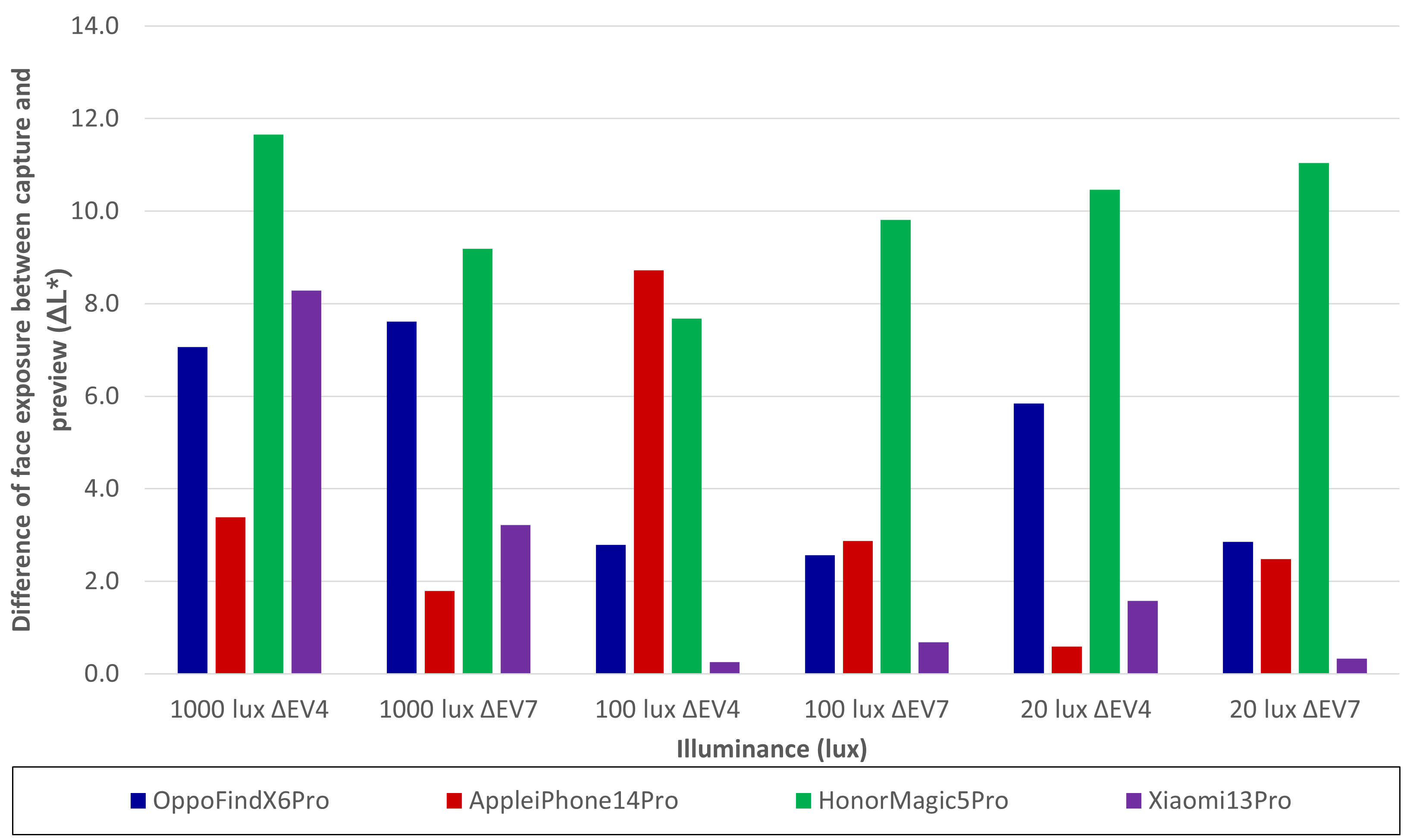
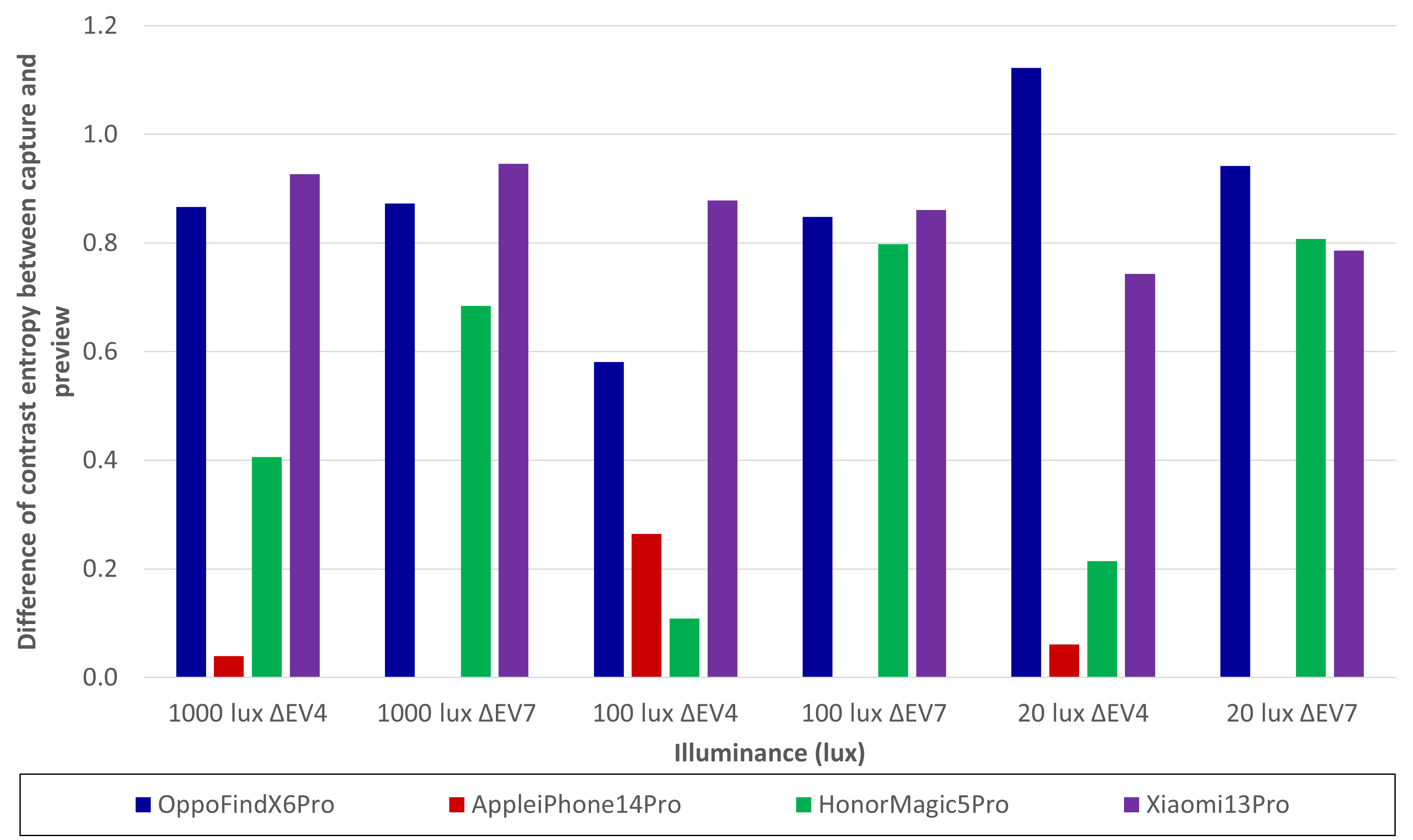
Zoom
Oppo Find X6 Pro
169
DXOMARK engineers capture and evaluate over 400 test images in controlled lab environments and in outdoor, indoor, and low-light natural scenes, using the camera’s default settings and pinch zoom at various zoom factors from ultra wide to very long-range zoom. The evaluation is performed by visually inspecting the images against a reference of natural scenes, and by running objective measurements of chart mages captured in the lab under different conditions from 20 to 1000 lux and color temperatures from 2300K to 6500K.
The Oppo Find X6 Pro comes with some major improvements over its predecessor in terms of zoom-related hardware and software, and it shows in the image results. In our tests, the ultra-wide camera produced accurate exposure and color rendering in most of the scenes and, thanks to its 50MP sensor, captured high levels of detail. The 15mm equivalent focal length is not the widest that we have seen, as compared to the Honor Magic5 Pro with its 13mm equivalent focal length, but is suitable for many scenes and helps keep distortion and corner softness at bay.
The tele module comes with a 3x zoom instead of the shorter 2x variant on the predecessor. Between 2x and 3x, before the tele camera takes fully over, the camera uses image fusion algorithms, which combined with the large 50MP sensor in the tele module, made for very good detail across a wide range of tele zoom factors.
Compared to devices like the Honor Magic5 Pro and the Huawei Mate 50 Pro, the Oppo does not provide the same extreme ultra-wide and tele focal lengths, but instead focuses on providing excellent image quality across a slightly smaller portion of the zoom range.
Video Zoom
In our tests, the Oppo also delivered sharper zoom images than most rivals in video mode. Zoomed video clips showed high levels of fine detail and low noise.

Wide
Oppo Find X6 Pro
122
These tests analyze the performance of the ultra-wide camera at several focal lengths from 12 mm to 20 mm. All image quality attributes are evaluated, with particular attention paid to such artifacts as chromatic aberrations, lens softness, and distortion. Pictures below are an extract of tested scenes.
The Oppo Find X6 Pro’s ultra-wide camera captured very sharp images with good exposure and well-rendered colors in most light conditions. The field of view was not quite as wide as on some direct competitors, but on the upside, this meant that some artifacts that are often seen on ultra-wide cameras, such as corner softness and anamorphosis on portrait shots, were less noticeable on the Oppo.

Tele
Oppo Find X6 Pro
128
All image quality attributes are evaluated at focal lengths from approximately 40 mm to 300 mm, with particular attention paid to texture and detail. The score is derived from a number of objective measurements in the lab and perceptual analysis of real-life images.
The Oppo Find X6 Pro comes with a dedicated tele camera with 3x zoom factor. In between 1x and 3x, the device compensates for a slight loss of resolution by an effective fusion algorithm, and overall the camera delivered sharp images across a wide tele zoom range. Zooming in further means digital zoom is applied to the tele camera images, which resulted in a noticeable loss of detail and less sharp images than devices with longer tele cameras, such as the Honor Magic5 Pro.
Our testers also assessed that high quality was also preserved down to low-light conditions.
The Oppo also delivered better detail than most of its Ultra-Premium rivals when zooming in video mode. Fine detail was nicely preserved while video noise was kept well under control in most light conditions.
Video
Oppo Find X6 Pro
159
DXOMARK engineers capture and evaluate more than 2.5 hours of video in controlled lab environments and in natural low-light, indoor and outdoor scenes, using the camera’s default settings. The evaluation consists of visually inspecting natural videos taken in various conditions and running objective measurements on videos of charts recorded in the lab under different conditions from 1 to 1000+ lux and color temperatures from 2,300K to 6,500K.
In the video tests, the Oppo Find X6 Pro achieved the second-best performance to date, just behind the Apple iPhone 14 Pro. Like in photo and zoom, the camera’s main strengths in video were the texture/noise management and the performance in low light, but our experts also noted the effective stabilization, good exposure, and accurate color rendering. In addition, video autofocus was stable and dealt well with transitions. The combination of accurate exposure and color rendering, as well as good detail capture in dim conditions make the Oppo a great option for low-light videography.

Exposure
Oppo Find X6 Pro
116
Exposure tests evaluate the brightness of the main subject and the dynamic range, eg. the ability to render visible details in both bright and dark areas of the image. Stability and temporal adaption of the exposure are also analyzed.
The camera produced accurate target exposure across all light conditions but suffered slightly from tone-mapping instabilities and stepping during exposure transitions.

Color
Oppo Find X6 Pro
120
Image-quality color analysis looks at color rendering, skin-tone rendering, white balance, color shading, stability of the white balance and its adaption when light is changing.
In video mode, the Oppo Find X6 Pro delivered natural color across all scenes, especially on skin tones and warm colors in low light. When shooting under warm light sources in low light, a strong orange cast could become visible, but colors were otherwise rendered well.

Autofocus
Oppo Find X6 Pro
120
Video autofocus was fast and accurate, with effective face tracking. In addition, focus transitions were very fast, with very little stepping. Still, the Oppo did not quite match the iPhone 14 Pro, which offers the most cinematic focus strategy of all current smartphones.
Texture tests analyze the level of details and texture of the real-life videos as well as the videos of charts recorded in the lab. Natural videos recordings are visually evaluated, with particular attention paid to the level of details in the bright and areas as well as in the dark. Objective measurements are performed of images of charts taken in various conditions from 1 to 1000 lux. The charts used are the DXOMARK chart (DMC) and Dead Leaves chart.
The Oppo produced high levels of detail and managed to outperform most of the competition in low light. Detail was also very good in video portraits, something that many of the Oppo’s rivals struggle with.

Noise
Oppo Find X6 Pro
120
Noise tests analyze various attributes of noise such as intensity, chromaticity, grain, structure, temporal aspects on real-life video recording as well as videos of charts taken in the lab. Natural videos are visually evaluated, with particular attention paid to the noise in the dark areas and high dynamic range conditions. Objective measurements are performed on the videos of charts recorded in various conditions from 1 to 1000 lux. The chart used is the DXOMARK visual noise chart.
Video noise was well under control when compared to other devices recording in SDR format. Noise levels were particularly low in textured areas, but some temporal noise could be noticeable in the shadow regions of the frame while the camera was moving. Our testers also noticed some local noise on moving subjects.

Stabilization
Oppo Find X6 Pro
119
Stabilization evaluation tests the ability of the device to stabilize footage thanks to software or hardware technologies such as OIS, EIS, or any others means. The evaluation looks at residual motion, smoothness, jello artifacts and residual motion blur on walk and run use cases in various lighting conditions. The video below is an extract from one of the tested scenes.
Video stabilization was very effective, allowing for decent results even when recording while running. Frame shift was counteracted by a processing solution, making for an overall smooth user experience in video mode.

Artifacts
Oppo Find X6 Pro
86
Artifacts are evaluated with MTF and ringing measurements on the SFR chart in the lab as well as frame-rate measurements using the LED Universal Timer. Natural videos are visually evaluated by paying particular attention to artifacts such as aliasing, quantization, blocking, and hue shift, among others. The more severe and the more frequent the artifact, the higher the point deduction from the score. The main artifacts and corresponding point loss are listed below.
When shooting video with the Oppo Find X6 Pro, most of the usual artifacts were well under control. Slight ringing was noticeable in all conditions, especially in difficult high-contrast scenes. Otherwise artifacts are pretty well controlled and very few issues can be spotted when filming.


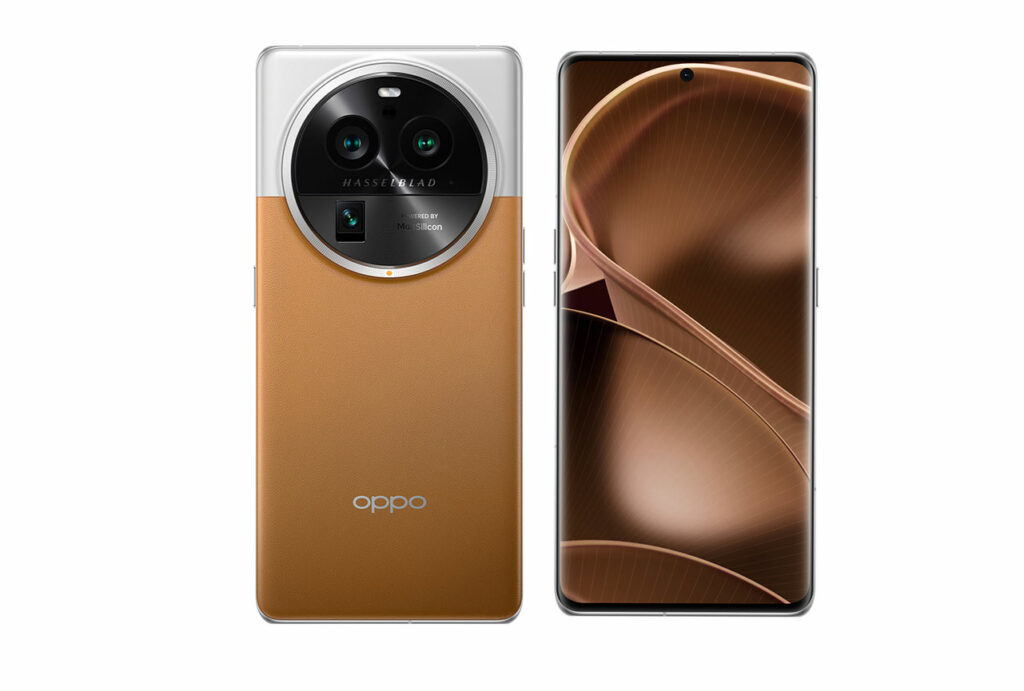



















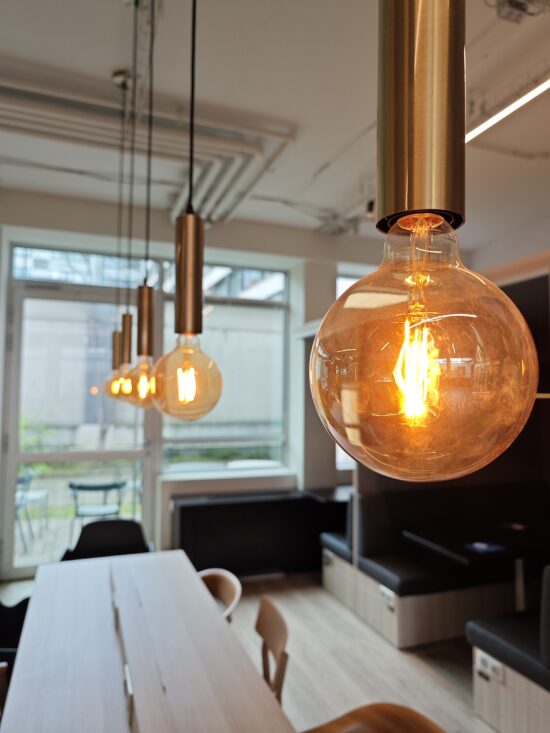


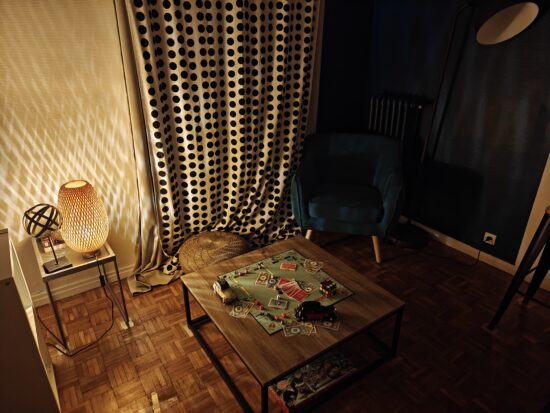
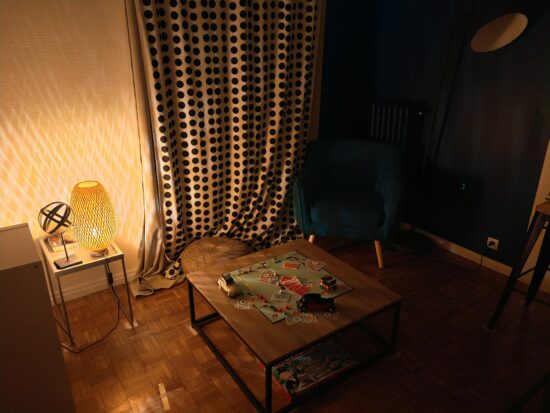

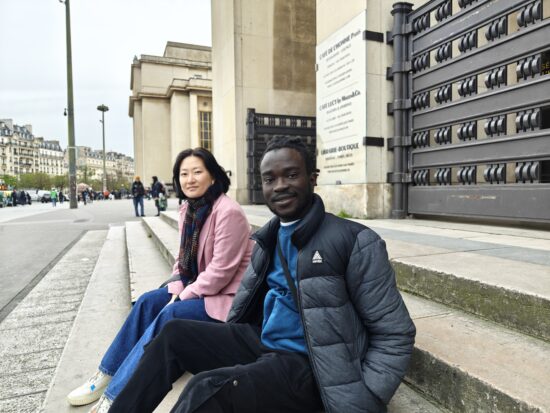


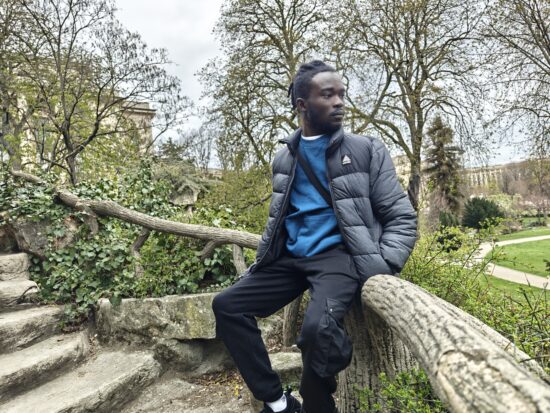
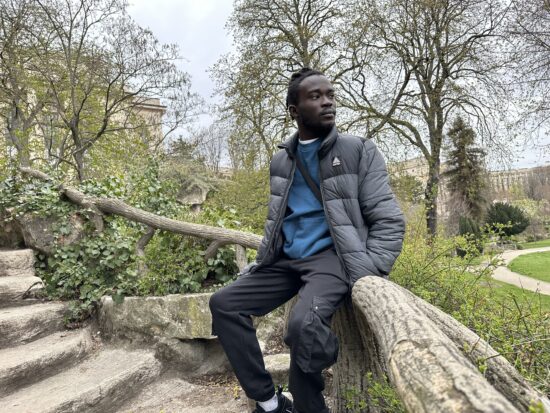








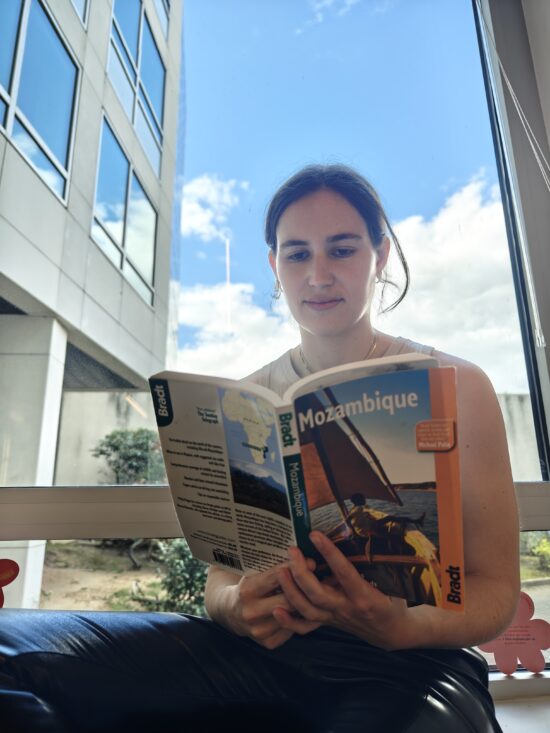
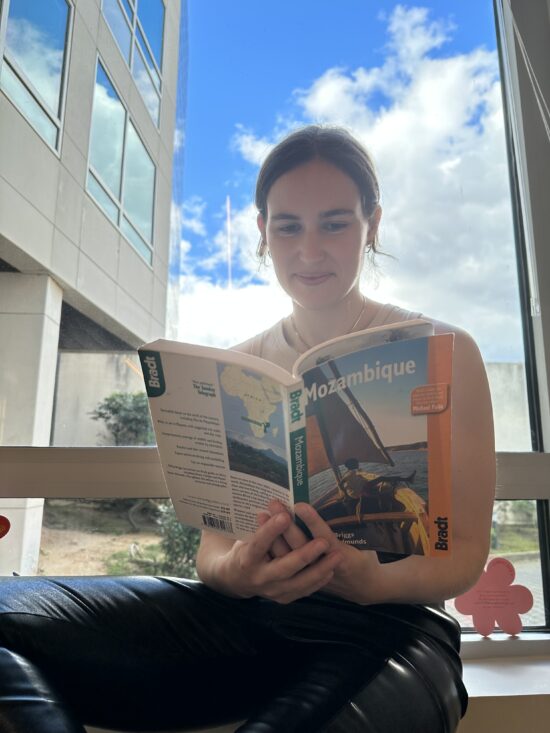
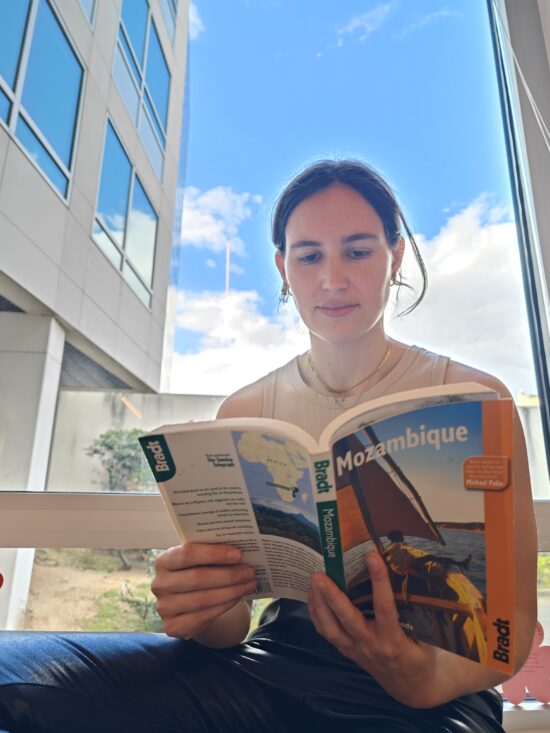



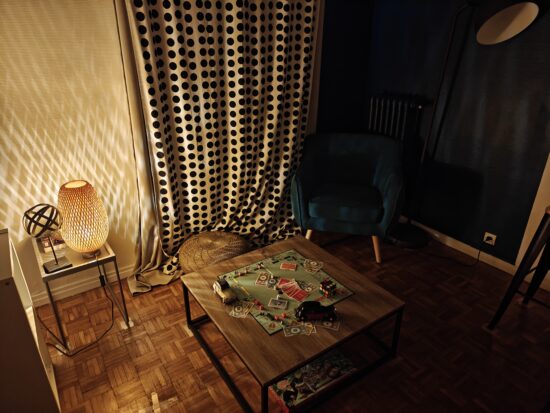
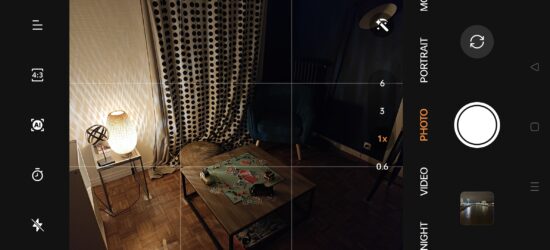
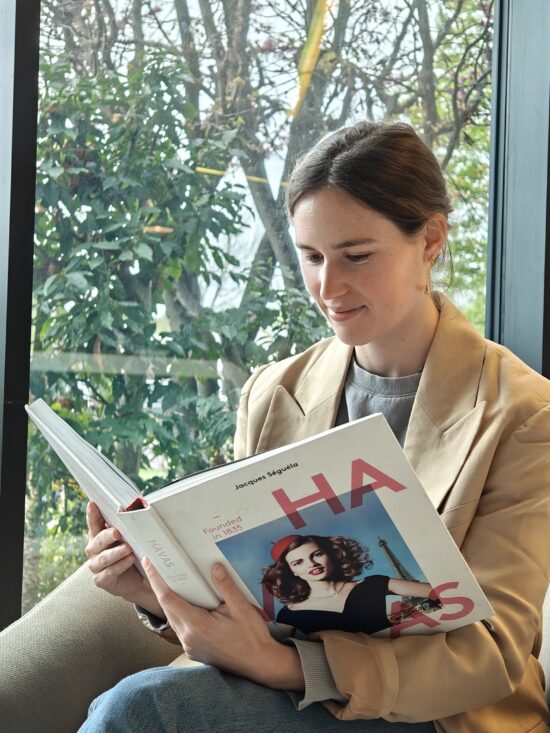
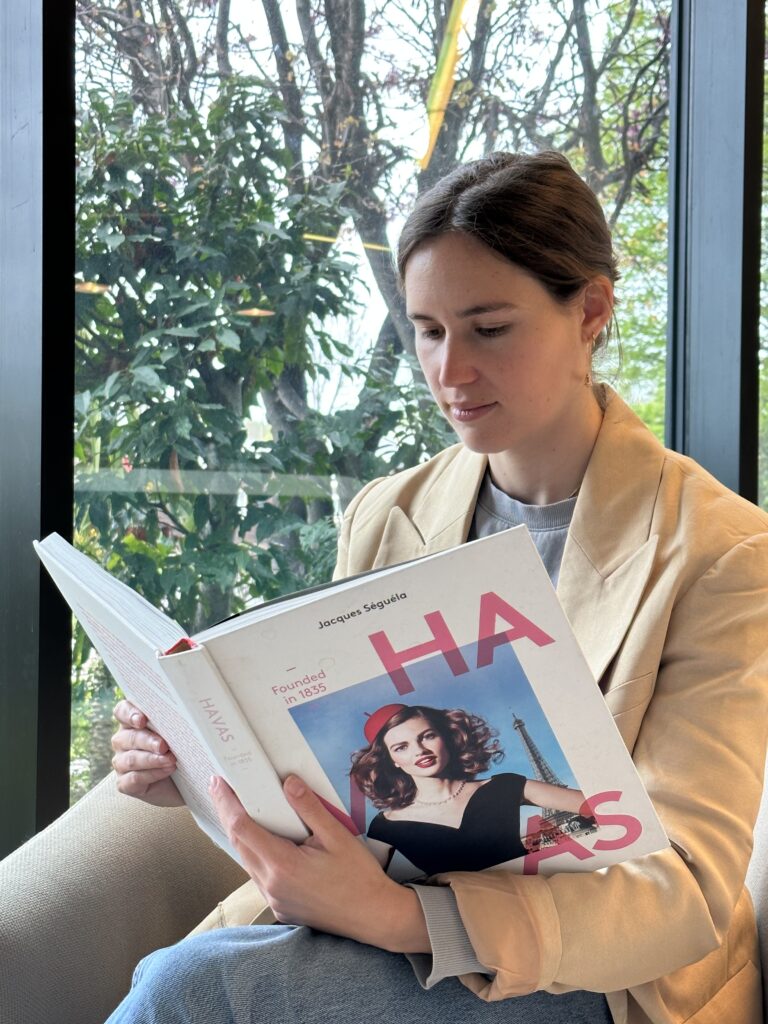
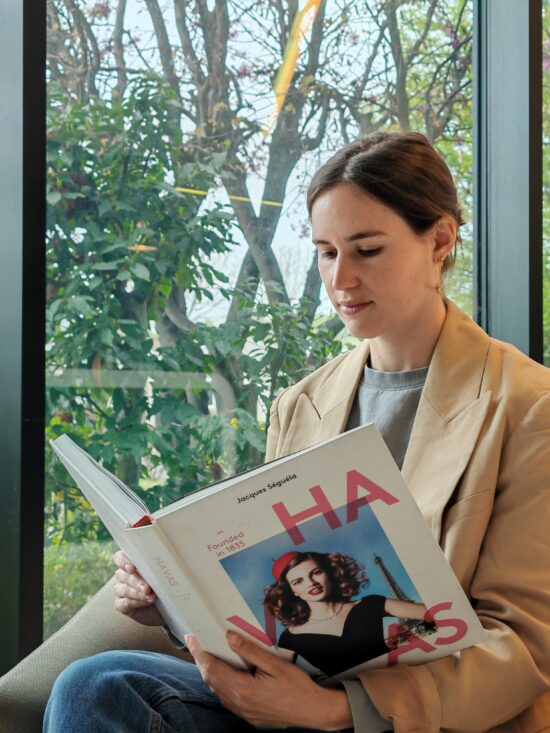









DXOMARK encourages its readers to share comments on the articles. To read or post comments, Disqus cookies are required. Change your Cookies Preferences and read more about our Comment Policy.